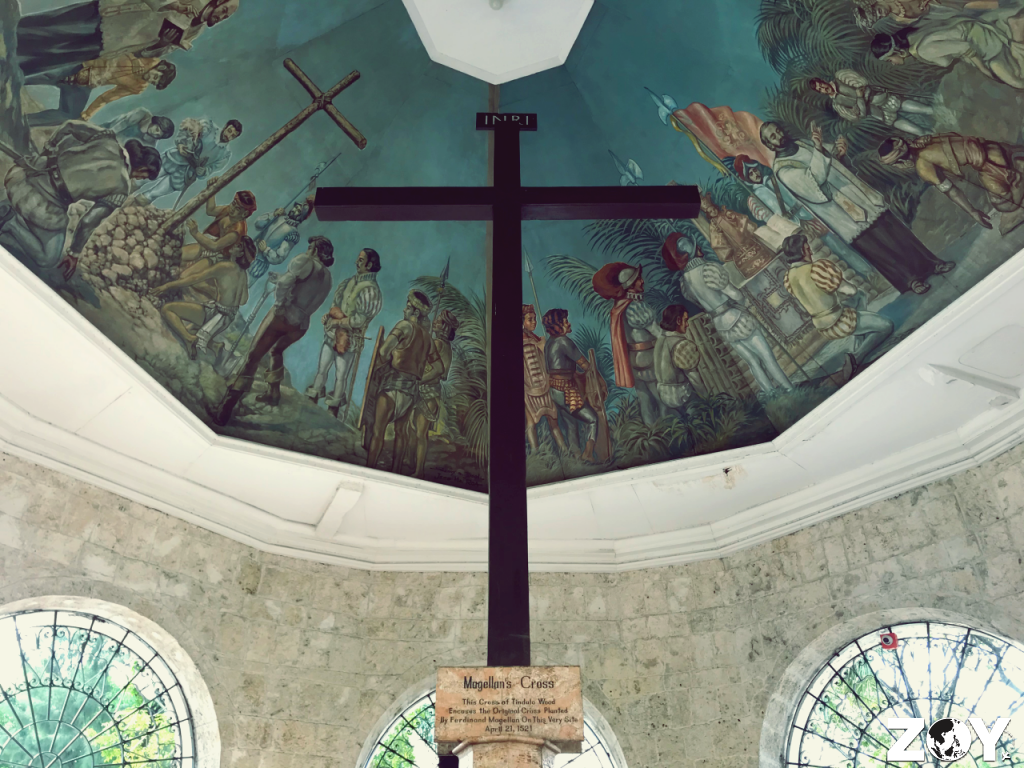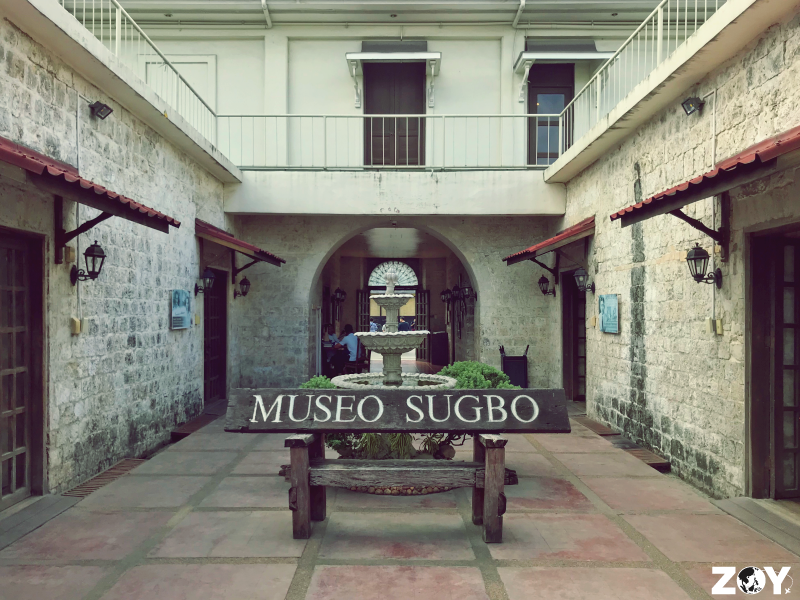A History Tour of Cebu City
Even though the lockdown period has been eased since the start of the month, it will take some time for me to gather content for future articles. As I’ve been doing since May, I’m just relying on stock content and fortunately, it will last me the entire month. On July, I plan to take a break from blogging. But I have an idea that’s brewing in my mind so I might break the break. LOL. Let’s see.
Anyway, I’ve been writing mostly about places abroad in the past weeks. Since I started last week, I’m still going local and will do throwback articles on Cebu until the end of June. So here you go…
Cebu City is the capital of the province of Cebu, which is located in Central Visayas, the central region of the Philippines. (So it’s the central of centrals! Ha! Never mind…) It is also the oldest city in the country, founded in 1565 by the Spanish conquistador Miguel Lopez de Legazpi, who was Christianizing the Visayan islands together with Augustinian friars.
A few decades earlier, the Portuguese explorer Ferdinand Magellan set foot on the island of Cebu in 1521. He was unfortunately killed in the Battle of Mactan, a neighboring island, by the native troops led by Lapu-Lapu, who was one of the island’s chieftains and a Philippine national hero.
But even prior to Magellan’s arrival, the Arabs, Chinese, and Siamese had already been trading with the natives. What I wish to say is that Cebu City has a long history. You can learn about its rich history through historical sites and museums. Here are the places you can visit to learn about the past of the Queen City of the South:
Casa Gorordo Museum
The Casa Gorordo Museum showcases the lifestyle of the Gorordo family and the Cebuano culture. It used to be the home of Isidro Gorordo and four generations of his family lived there, including Juan Gorordo, the first Filipino bishop of Cebu.
Casa Gorordo Museum
The Gorordo ancestral house is a kind of balay nga tisa (house with tiled roof), with an architecture that mixes Chinese, Spanish, and native influences. It was bought by the Ramon Aboitiz Foundation, Inc. (RAFI) and then converted into a museum.
Inside Casa Gorordo Museum
The Dining Table of the Gorordo Family
By the way, check out my article on Casa Gorordo Museum this Thursday!
Address: Don Eduardo Aboitiz St. (formerly Lopez Jaena St.), Brgy. Tinago, Cebu City | Operating Hours: Daily, 9AM-5PM | Admission Fees: P120 (inc. of guided tour and a souvenir); 20% discount is offered to senior citizens, college students, and high school students of all nationalities | Facebook | Website
Fort San Pedro
With Cebu City being the oldest city in the country, it also has the oldest fortress as well. Located in Plaza Independencia, Fort San Pedro was built by the Spaniards under Legazpi. It was initially made with wood. But to defend from Muslim raiders, it was upgraded with stones.
Fort San Pedro
It is also the smallest fort in the country. I walked around it’s triangular layout in just 5 minutes (or even less)!
That’s the entire fort!
Address: A. Pigafetta St., Cebu City | Operating Hours: Daily, 8AM-7PM | Admission Fees: P30; 20% discount is offered to senior citizens, students, and PWD
Krus ni Magellan (Magellan’s Cross)
Arguably the most popular of all landmarks in the city, Magellan’s Cross was planted by Magellan to signify the beginning of Roman Catholicism in the country. It is said that the current cross isn’t the original one but is only a covering for the original. Some, however, contend that it’s just a replica replaced in 1565, as the original one was either removed or destroyed.
Having studied grade school in the Philippines, I was exposed to many pictures of Magellan’s Cross. So seeing this landmark is somehow ticking off a bucket list for me. Yay!
Address: A. Pigafetta St., Cebu City | Operating Hours: Daily, 8AM-6PM | Admission Fees: Free!
Museo Sugbo (Cebu Provincial Museum)
If you want to learn the history of Cebu, then head to Museo Sugbo (literally Cebu Museum) or the Cebu Provincial Museum. It has 12 galleries showcasing the province’s history back to pre-colonial era to World War II times.
Museo Sugbo
But what’s more interesting is the history behind the museum building. It was originally a prison called the Carcel de Cebu and has even jailed Katipuneros, who were patriotic revolutionaries who fought for independence from the Spaniards. Then in the time of the Americans, it was converted to a stable for horses used for a nearby racetrack then reconverted to a prison, renaming it the Cebu Provincial Jail.
Inside one of Museo Sugbo’s galleries
Museo Sugbo has the largest collection of Emergency Notes, which was produced by the Commonwealth government during the Japanese occupation
During WWII, the Japanese used it a prison for their guerilla captives. When the Japs surrendered, it went back to the Filipinos and served as the Cebu Provincial Detention and Rehabilitation Center or CPDRC. When the CPDRC moved to a modern facility, the building finally housed Museo Sugbo in 2004.
Address: M.J. Cuenco Ave., Brgy. Tejero, Cebu City | Operation Hours: Tuesday-Saturday, 9AM-5PM | Admission Fees: Adults, P30; Senior Citizens and Students, P30; Foreigners, P75 | Facebook
The Heritage of Cebu Monument
Compared to other landmarks featured in this article, this one is fairly new. The Heritage of Cebu Monument is a massive sculpture work located in the Cebu’s Parian (or Pari-an), which are districts where the Spanish authorities designate the Chinese. Today, the Parian district is home to a lot of heritage landmarks (2 other landmarks in this article can be found here).
The monument depicts historical sites and events such as the baptism of Rajah Humabon, the island’s “king” when the Magellan arrived, and the Battle of Mactan. It also features notable Cebuanos such as Former President Sergio Osmeña and St. Pedro Calungsod.
The Heritage of Cebu Monument
The sculptures were made by national artist Eduardo Castrillo and various media were used, namely brass, bronze, concrete, and steel. The project was started in July 1997 and inaugurated in December 2000.
Address: Between Mabini St. and Sikatuna St., Parian District, Cebu City
Yap-Sandiego Ancestral House
This ancestral house is another heritage house-turned-museum in the Parian district. Built in the late 17th century, it is originally owned by the couple Don Juan Yap and Doña Maria Florido. Their eldest daughter, Maria, married the Parian’s Cabeza de Barangay (head of barangay, the smallest government unit in the country) Don Mariano Sandiego. It’s where the house got the name. Today, the house is being managed by a 10th generation descendant.
Yap-Sandiego Ancestral House
The house is said to be the first Chinese house outside China. Its floors are made with Molave wood, the roof with terracotta from China, and walls with coral stones. That’s why the locals refer to the house as the “balay nga bato ug kahoy”, which literally means “house of stone and wood”.
Inside Yap-Sandiego Ancestral House
Inside, you will see the collection and household items used and accumulated by the Yap family through the years.
Address: 155 Lopez Jaena St. cor. Mabini St., Parian District, Cebu City | Operation Hours: Daily, 8AM-8PM (except on Wednesday & Saturday, which closes at 7PM | Facebook
Which of the landmarks above have you visited or would like to visit? What historical site should I visit next in Cebu? Comment them below!













